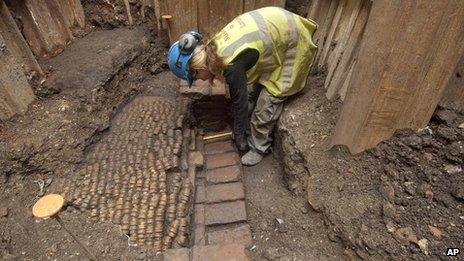Shakespeare Curtain Theatre: Remains reveal toy used for sound effects
- Published
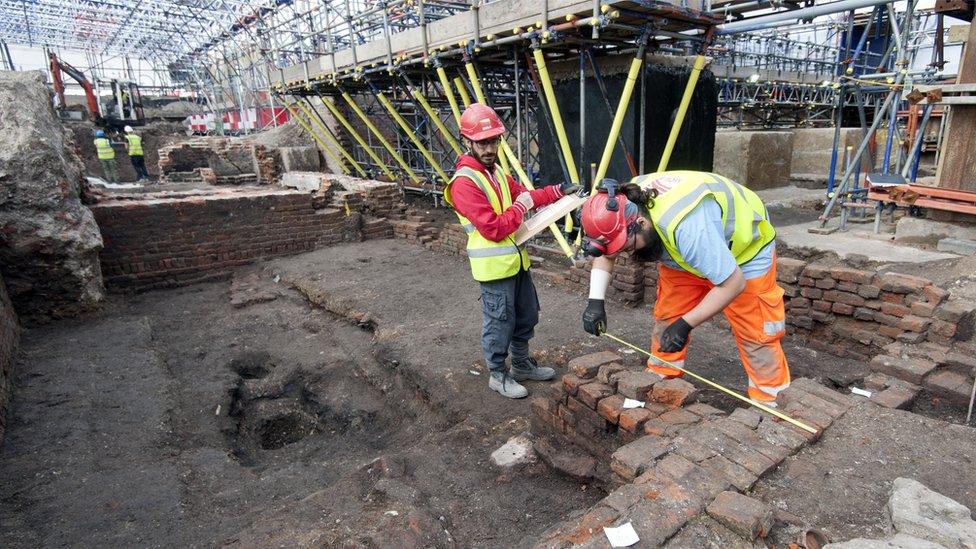
The Curtain Theatre is thought to have measured 22m by 30m
A 'bird whistle' thought to have been used for sound effects in 16th century performances of Romeo and Juliet has been discovered.
Archaeologists found the whistle at the site of the Curtain Theatre, one of Shakespeare's least-historically documented playhouses.
Historians said the theatre in Shoreditch, east London, would have been rectangular rather than curved.
The dig will last another month before the site becomes a visitor centre.
The remains of the Curtain, which opened in 1577, were found behind a pub as part of regeneration works in 2011.
Bird whistles were children's toys, but may have been used for sound effects in theatrical performances.
In Romeo and Juliet, staged at the Curtain Theatre, there are numerous references to bird song such as "That birds would sing and think it were not night".
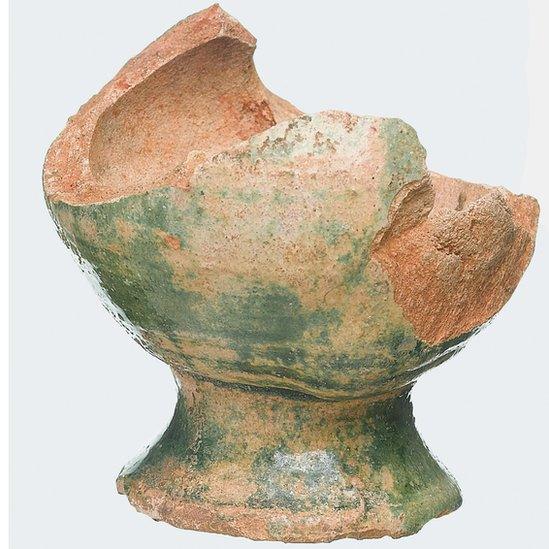
The fragments of the bird whistle was one of the major finds on the site in Shoreditch
Heather Knight, the senior archaeologist leading the dig on behalf of the Museum of London Archaeology, said: "Theatre producers at that time were always trying to find new ways to animate their productions and delight audiences.
"Archaeologists and theatre historians have long pondered what the Curtain Theatre looked like - this long-awaited excavation is now starting to give up the secrets of this historic site."

A token found at the Curtain Theatre site
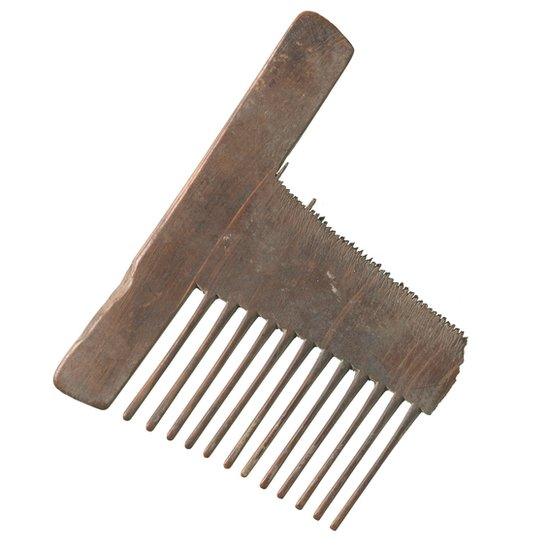
A comb made out of animal bone was found on the Shoreditch site

The history of The Curtain
The Curtain was operated by theatre manager James Burbage and was home to Shakespeare's Company, the Lord Chamberlain's Men, from 1597 until The Globe opened two years later.
The theatre disappeared from historical records in 1622 but could have remained in use until the outbreak of the Civil War, 20 years later.
Plays thought to have premiered there include Shakespeare's Henry V and Ben Jonson's Every Man in His Humour.
The venue was immortalised as "this wooden O" in the prologue to Henry V.

Findings from the excavation suggest the structure reused the walls of earlier buildings, with the back section of the playhouse being a new addition.
Archaeologists have been able to identify the courtyard, where theatregoers stood, and the inner walls, which held the galleries where wealthier audience members would have sat.
Archaeologists also found personal items, including an animal bone comb.

The remains of the Curtain will be preserved in-situ at The Stage, a development in Shoreditch
The Curtain's foundations will be put on permanent display as part of a major redevelopment which will include homes, shops and restaurants called The Stage.
The public can book tours to visit the site on Fridays from 20 May to 24 June.
- Published23 April 2014

- Published7 February 2013
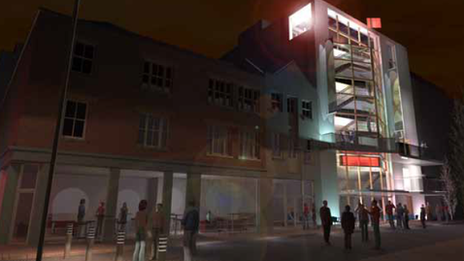
- Published7 June 2012
